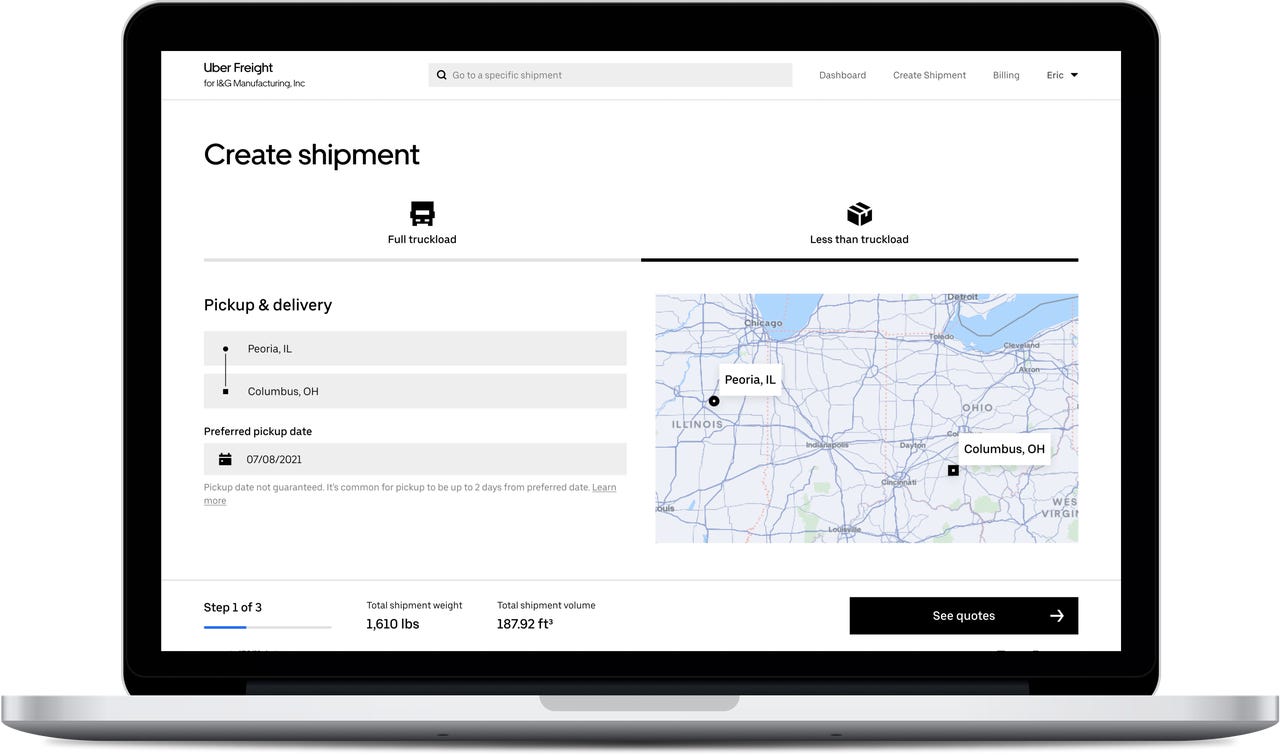Uber Freight expands into a new trucking market to serve customers with smaller shipments


Uber Freight on Wednesday announced it's expanding into the less-than-truckload (LTL) market -- a segment of the trucking industry that serves businesses with relatively small loads of goods to ship across the country.
Uber's new LTL service is tightly integrated into the Uber Freight platform. It's backed up by Uber's new partnership with BlueGrace Logistics, a third-party logistics provider that already has a significant scale in the LTL space.
The new service brings Uber Freight closer to its vision of moving goods of any size, all the way from a port to the end-user.
Uber Freight ultimately wants to "transform logistics for small and medium-sized businesses and support freight all the way from the first to the final mile," Michael Bailey, Uber Freight product manager, said to ZDNet. "Our vision is to be a one-stop-shop so that a shipper can move any goods at any time with instant pricing and full transparency."
The Uber Freight platform already connects available truck drivers with shippers that need to move full truckloads of goods. However, several businesses -- simply due to the nature of their business -- can't fill a full truckload. Up until now, using the Uber Freight platform didn't really make sense for those shippers. Access to the LTL market has been one of the most requested features for the platform.
While there are about 400 000 full-truckload (FTL) carriers in the US, there are only around 150 LTL careers, with about 40 LTL carriers taking a vast market share. The top carriers include FedEx Freight, Yellow Corp. and XPO Logistics. While FTL carriers can move just about anywhere, LTL carriers typically follow pre-determined routes, much like a train network.
While the market is much more concentrated, carriers still move an enormous amount of freight. The market is expected to reach over $80 billion in the US this year.
Uber's partnership with BlueGrace is key in terms of giving the shippers on Uber's platform access to that small market of LTL carriers, as well as competitive rates.
With Uber's new service, shippers will be able to use the Uber Freight Shipper Platform to select from a list of LTL carriers, schedule pickups and deliveries, manage LTL billings and track shipments. They'll be able to receive quotes based on item details, pickup and delivery locations, and dates.
Shippers will also be able to quickly compare quotes across FTL and LTL within a single platform. They can use the same login and invoicing experience, access the same support teams and receive the same notifications as they do for FTL shipments.
The new service follows a year of significant growth for Uber Freight. During Uber's last-reported quarter, the business segment brought in $301 million in revenue, up 51% year-over-year.
"We're confident about Uber Freight's product-market fit in a very large TAM opportunity," Uber CEO Dara Khosrowshahi said during the company's quarterly conference call in May.